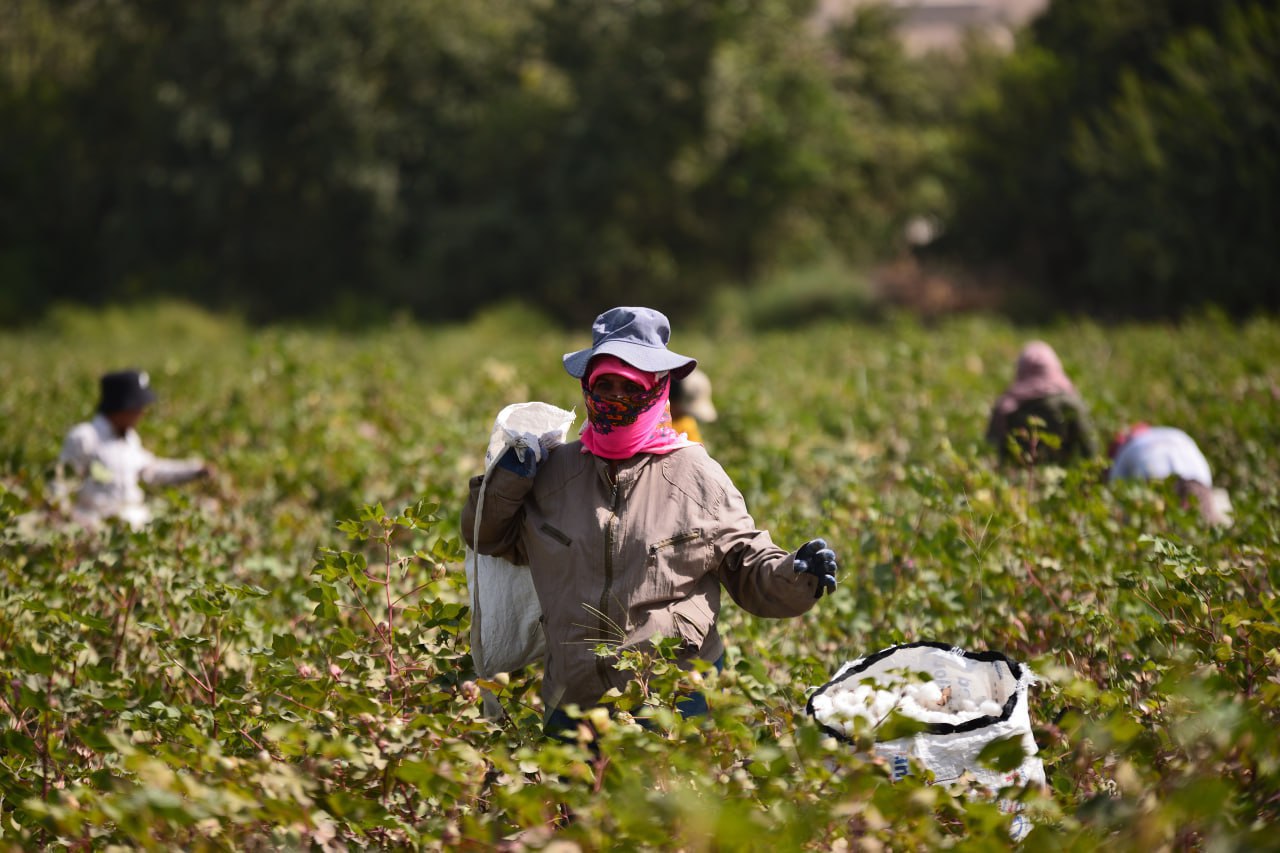Cotton harvesting in Tajikistan is reportedly progressing too slowly and if this trend continues, production volumes may decline, negatively impacting the development of the textile industry and cottonseed oil production in the country.
“As of October 22, 2024, around 164,000 tons of cotton have been harvested across the country. The cultivation area covers 174,979 hectares, which is 8,635 hectares more than last year,” Bakhtiyor Nazarov, head of the Ministry of Agriculture (MoA)’s Crop Production Department told Jumhuriyat newspaper, the government’s mouthpiece, in an interview. He mentioned that currently, over 4,000 tons of cotton are being harvested daily, and cotton-pickers are paid 1.50 to 2.00 somonis per kilogram of raw cotton.
The MoA’s latest data shows that over 52,000 tons have been harvested in Sughd province, approximately 110,000 tons in Khatlon province, and 1,200 tons of raw cotton in the cotton-growing districts subordinate to the center (RRP) . Levakant was reportedly the first to fulfill its cotton harvest target, and Konibodom, Dousti, Bobojon-Ghafourov, Spitamen, Kushoniyon, Shahritous, Vakhsh, and Jayhun are expected to fulfill their cotton targets soon.
One major reason for the low harvest rate has been heavy rains, which delayed the cotton planting season. This year's cotton harvesting campaign began on September 17, nearly 20 days later than last year. As a result, the cotton harvest season might extend to mid-December, which could mean lower production than it was originally planned. This delay could significantly impact the operations of textile and oil-producing enterprises.

Low cotton processing rates
Sherali Kabir, Tajikistan’s Minister of Industry and New Technologies, recently voiced concerns about the low volume of cotton processed domestically. In an interview with Bonuvoni Tojikiston magazine, he noted that only 20-25% of the cotton Tajikistan produces is processed into manufactured goods in Tajikistan, while the remainder is exported for manufacturing outside the country.
Last year, Tajikistan reportedly earned US$302 million from yarn and finished goods exports.
The minister stated that a new cotton processing plant, under construction in Kulob with foreign investors, will have the capacity to process 130,000 tons of cotton and produce 42,000 tons of yarn. This US$360 million project will create 11,000 new jobs. "We plan to establish six such large facilities, which will be a significant step toward processing our cotton domestically," Kabir added.
The minister also reported that there are currently 72 vegetable oil production facilities operating in Tajikistan, with a combined annual production capacity of around 100,000 tons. The country's market demand for cooking oil is 136,000 tons. “However, our facilities are outdated. The national leader has ordered the modernization of four plants,” Sherali Kabir explained. “Some assume that since we have cotton, producing oil isn’t an issue, but in fact, we have a supply problem. Producing 100,000 tons of oil requires 833,000 tons of oilseeds. Tajikistan currently has only 192,000 tons, almost four times less than needed."
Due to this shortage, Tajikistan reportedly spends about US$100 million annually on importing vegetable oil from Kazakhstan, Ukraine, and Russia. However, Kabir noted that over the first half of 2024, vegetable oil imports have dropped by 7.0% compared to the same period last year. He expressed optimism that, with the progress in local industrial facilities, this issue will eventually be resolved positively.








Kremlin spokesman says Russia needs migrant workers amid ‘strained demographic situation’
Sand and dust storms threaten Tajikistan’s glaciers
Labor ministry denies rumors of compensation payments
Tajikistan’s International Airports to Pay Civil Aviation Agency Fees
Tajikistan faces corn deficit, spends millions dollars on corn imports
Landslide and rockfall block highway in GBAO’s Darvoz district at two locations
Revenues of private telecommunications operators in Tajikistan have reportedly decreased noticeably
30% of agricultural land in Tajikistan is in critical condition
ADB launches major initiative to build resilience to melting glaciers
About 20 officials summoned to court in case against Payk editor-in-chief
All news
Авторизуйтесь, пожалуйста